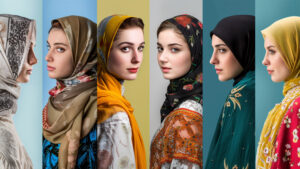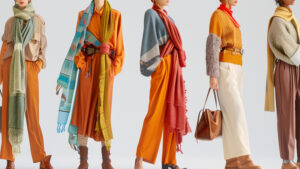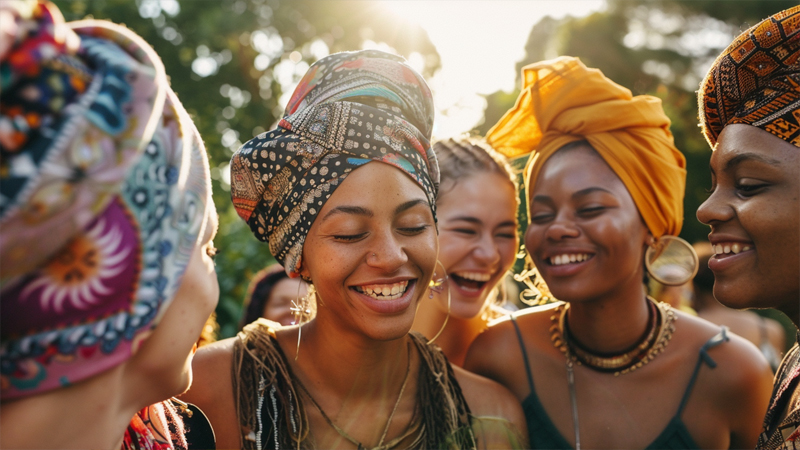
I’ve always loved how a simple head wrap can speak volumes about who we are.
Head wraps come in countless styles and serve many purposes, from cultural expression to everyday convenience. They often merge tradition with modern fashion, making them both meaningful and trendy.
They’ve become a cherished part of my life.
How do traditional head wrap styles differ from contemporary ones?
Traditional head wraps often reflect community roots, while modern versions embrace fresh twists.
Traditional head wraps usually center on cultural heritage1, while contemporary styles focus on creative expression2 and practicality.
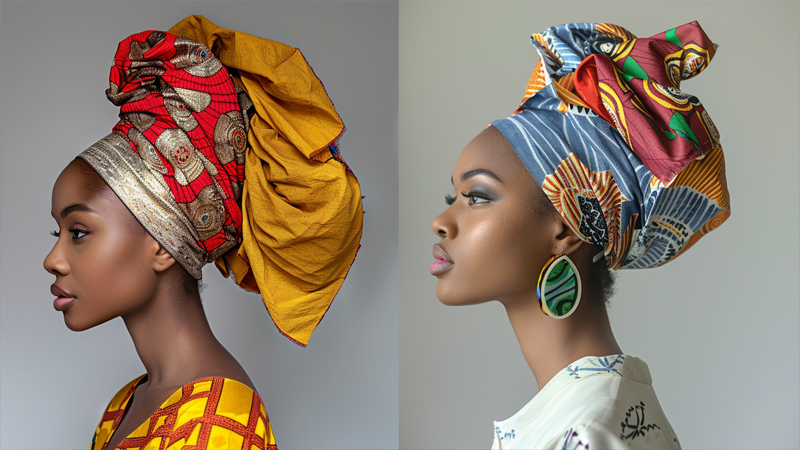
When I first discovered traditional wraps, I was struck by their significance: they weren’t just fabric—each design felt like it carried a piece of history. In many cultures, these wraps have symbolized status, personal identity, and belonging for generations. I remember hearing a friend talk about her grandmother’s elaborate ceremonial wrap, woven with threads of gold to mark special family milestones. Meanwhile, I’ve noticed today’s head wraps often feature vibrant prints or playful patterns, blending cross-cultural influences. You might see a single piece of cloth twisted into a high turban, or perhaps a draped style that frames the face in a soft silhouette.
Those subtle changes echo our evolving fashion landscape. I think it’s fascinating how social media allows us to experiment and share new styles, turning a centuries-old tradition into something fresh, playful, and totally personal. We can incorporate bohemian scarves, vintage bandanas, or soft cotton turbans for a modern spin. Sometimes I’ll even wrap a lightweight scarf in a casual knot if I’m heading to a coffee shop, just because it feels right. Yet, I never forget that each twist and fold has a story behind it, reminding me of the lineage that came before me.
Celebrating Cultural Pride
From attending weddings with regal African geles to witnessing the intricate wraps worn at Middle Eastern gatherings, I see so many traditional expressions of heritage. These older styles often require detailed wrapping techniques that have been passed down through storytelling or through personal guidance from elders. On the other hand, modern wraps feel more relaxed and spontaneous. They’re not necessarily pinned to ancient customs but still carry hints of the past. The best part is this duality: we can preserve the foundation while adding a splash of our personal flair.
| Key Feature | Traditional Style |
|---|---|
| Symbolism | Deep cultural meaning |
| Techniques | Passed down through generations |
| Modern Adaptation | Limited, often ceremony-based |
| Key Feature | Contemporary Style |
|---|---|
| Symbolism | Personal expression |
| Techniques | Experimental or online tutorials |
| Modern Adaptation | Highly customizable |
All in all, I love balancing both worlds—honoring heritage while embracing new approaches. It’s like wearing history, creativity, and self-expression all in one wrap.
What are the functional uses of head wraps in various cultures?
They’re not just stylish; they also provide warmth, protection, and identity.
In many cultures, head wraps shield against the elements3, mark social status, and maintain hair hygiene.
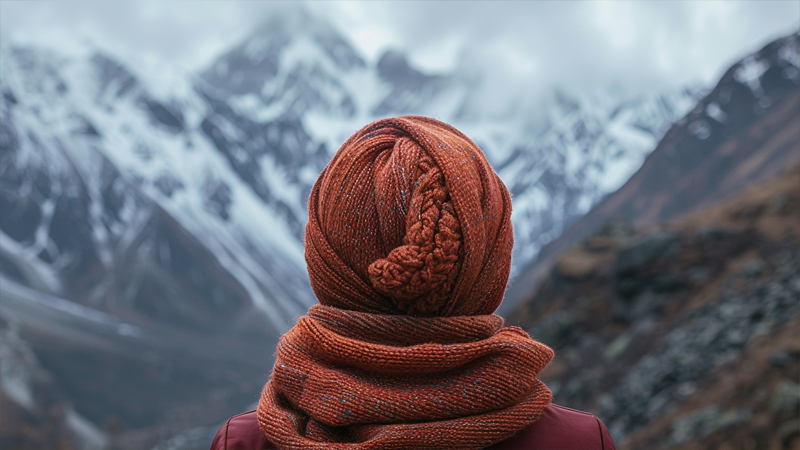
I still remember a chilly morning in a mountainous region where people wore thick, woolen wraps to keep their ears and heads warm. It was the first time I realized that head wraps weren’t just ornamental—they served a real, practical purpose. In other places, I’ve seen farmers don light cotton wraps to protect themselves from sun and dust. When I traveled to a coastal city, I noticed people using slightly damp scarves to keep cool against the tropical heat. It’s amazing how something so simple adapts across different climates.
But there’s also a powerful social component. Whether it’s a structured turban that indicates a religious practice or a scarf that distinguishes marital status, head wraps can convey meaningful identity clues. My aunt once told me about how her head wrap color changed after she got married—it was a way for her community to show respect and recognize new roles. That tradition gave her a deep sense of belonging, and I could feel how proud she was to share it.
Practicality Meets Cultural Significance
When we explore the functional side, it’s like peeling back layers of tradition. Head wraps protect hair during dusty journeys, keep braids in place during dance performances, and even serve as an impromptu bag for carrying small items (I’ve tried this in a pinch!). These daily uses often intertwine with cultural norms, so each wrap is more than just a piece of cloth—it’s a subtle nod to local customs, weather, and lifestyle. I’m always impressed by how seamlessly practicality and heritage go hand in hand.
One detail that stands out to me is how people also use head wraps to preserve hairstyles4, especially in regions with humidity. Keeping hair tucked away helps maintain neat braids or twists. Sometimes, it’s about showcasing personal flair without compromising comfort. Ultimately, each culture has its unique twist on why and how they wrap, reflecting both a need for utility and a desire to celebrate identity.
How can you style head wraps for everyday wear?
Try experimenting with colors, fabrics, and easy knot techniques.
Choose soft, breathable wraps, then explore different tying methods for a casual, chic everyday look.
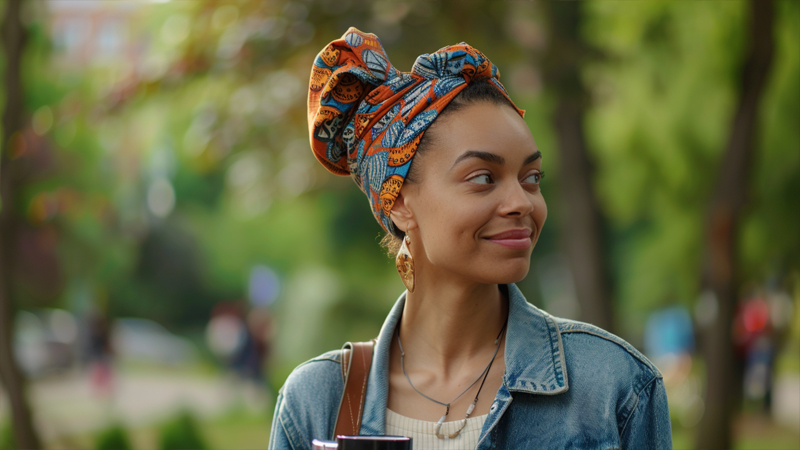
I’ve had countless mornings where I’m rushing out the door, coffee in one hand and a scarf in the other. That’s when I discovered the joy of a quick front-knot wrap5—it’s simple, keeps my hair in place, and adds a pop of color to my outfit. You don’t need to spend ages fussing with layers; sometimes a single knot or bow can lift your whole mood.
When it comes to choosing fabrics, I’ll admit I’m a sucker for soft cotton or lightweight jersey6 because they’re gentle on the scalp and breathable in warmer weather. I’ve also dabbled with silk scarves when I want a little shine or a more glamorous vibe for an afternoon brunch. And speaking of brunch, once I tied a vibrant scarf around my messy bun, and friends kept asking if I had some secret styling hack—truth is, it was just a playful impulse that morning.
Everyday Confidence
What I love about head wraps is that they can instantly elevate a basic outfit. Whether you pair them with a denim jacket or a flowy sundress, they spark conversation and let your personality shine through. It’s like wearing a piece of art that’s entirely your own.
If you’re new to wraps, consider starting with a simple style: fold the scarf into a narrow band, wrap it around your hairline, and tie a small knot at the back or side. In just a few seconds, you’ve got a neat way to protect and adorn your hair. If you have extra length, experiment with a bow or a rosette twist. That little creative flair can make an everyday activity—like grocery shopping—feel special. I think of it as sprinkling a bit of personal magic onto the day. After all, who doesn’t want to feel stylish while grabbing a carton of milk?
What types of head wraps are suitable for special occasions?
Look for luxurious fabrics, ornate patterns, and bolder silhouettes.
Choose structured wraps with embellishments7 or sparkling accessories to create a memorable statement for special events.
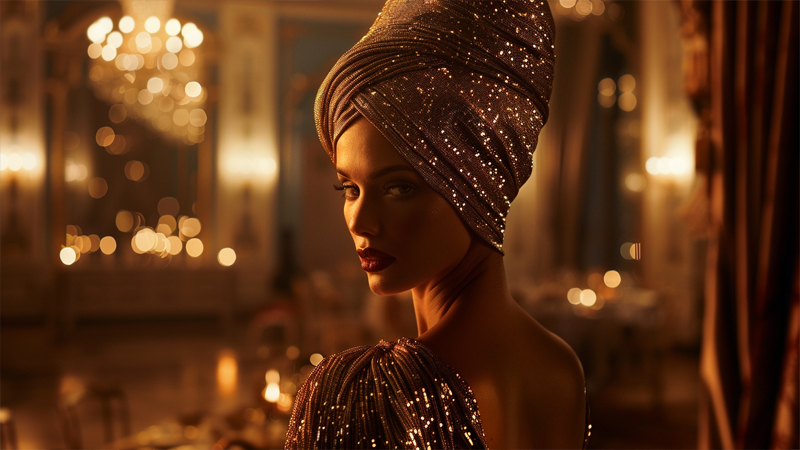
I’ll never forget the time I attended a wedding wearing a sequined head wrap. It felt like a crown, boosting my confidence the moment I put it on. Special occasions call for something extra. Whether it’s a formal dinner, festive holiday gathering, or a friend’s milestone celebration, a well-chosen head wrap can really steal the show.
For me, this usually involves a more structured style, like a turban with some height or intricate folds that frame my face. The type of fabric is key—metallic accents, satin finishes, or beaded details can transform a simple wrap into a conversation piece.
Dressing to Impress
In certain cultures, a specific wrap style might be expected for important ceremonies, often signifying honor or tradition. I’ve seen elaborate African geles8 that require stiff, glamorous fabric and some serious skill to tie. Others might opt for a softly draped chiffon wrap, pinned with a jeweled brooch for a classic Hollywood vibe. Regardless of the tradition, the message is clear: this is a special moment worth celebrating.
Adding accessories can be fun, too. I’ve placed small flower pins along the edge of a wrap to make it more festive. Or consider weaving a string of pearls or decorative ribbon through the folds. The goal is to capture a celebratory mood without overpowering your outfit. And hey, if you’re feeling bold, go for bright reds, golds, or even prints with intricate motifs. After all, these events are rare opportunities to express your flair. Trust me, you’ll be remembered for your radiant style. Just don’t forget to enjoy the moment—take a few pictures, share some laughs, and cherish how amazing you look and feel.
Conclusion
Head wraps let us celebrate culture, style, and personal creativity all at once.
-
Exploring the significance of cultural heritage in traditional head wraps can deepen understanding and appreciation for the rich history and symbolism behind each design. ↩
-
Understanding the role of creative expression in modern head wrap styles can inspire individuals to explore and incorporate unique, personal touches into their own fashion choices. ↩
-
Explore how head wraps serve as a practical solution for protection against various environmental conditions, enhancing your understanding of their utility. ↩
-
Learn about the role of head wraps in maintaining hairstyles, especially in challenging climates, offering insights into practical hair care solutions. ↩
-
Learn the simple steps to master the quick front-knot wrap, a stylish and efficient way to add a pop of color to your outfit. ↩
-
Explore the benefits of lightweight jersey for head wraps, offering comfort and breathability for a glamorous yet practical style. ↩
-
Discover innovative styling tips and ideas for structured wraps with embellishments to make a lasting impression at any special event. ↩
-
Explore the rich cultural heritage and styling techniques behind elaborate African geles to honor traditions and make a statement at ceremonies. ↩

